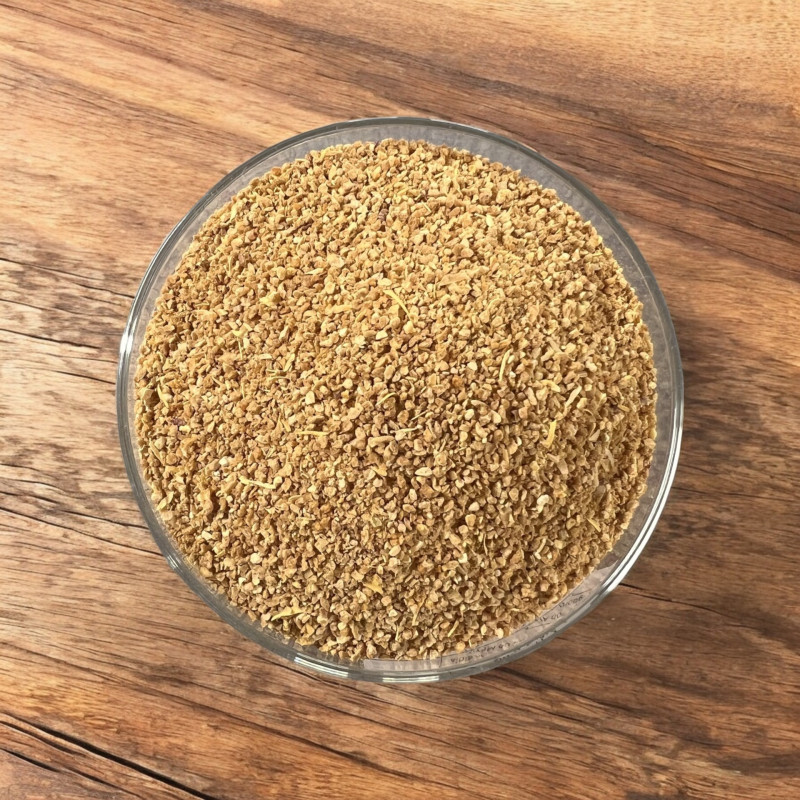
Reference: 3N7137901


This is dried lemon peel chopped into pieces of approximately 0.3 to 1 cm. You'll experience the familiar lemon flavor along with the slight bitterness of the peel.
Perfect for your tea and infusions, spirits, baked goods, as well as sauces for fish, poultry, and other meats.
 Delivery
Delivery
Mondial Relay
 Returns
Returns
See conditions
 Payments
Payments
100% secure
Livré en sachet refermable
°°°
Uses in Cooking and Beyond:
The small pieces (approximately 0.3 to 1 cm) of this chopped lemon peel allow for a quick release of flavor in your preparation. Their color is orange-yellow on the outside, beige-white on the inside, and sometimes slightly green or brown depending on the fruit's ripeness.
These lemon peels will enhance your teas, infusions, homemade spirits, as well as sauces for fish, poultry, and even veal. Personally, I often add them to poultry stuffing, like guinea fowl. You can also add them to very sweet jams (such as apricot) to moderate the sweetness. Of course, they’re perfect in pastries—ground into powder if you prefer—for madeleines, cakes, biscuits, sponge cakes, crème brûlées, brioches, whipped cream, custards, etc. You can also macerate the pieces in olive oil or other oils for use in salads. Additionally, they are ideal for alcohol preparations like punch or mulled wine, as well as fruit juice cocktails.
These peels should not be consumed as-is. They should be steeped for a few minutes in milk, warm water, fruit juice, or any other liquid used in your recipe. This way, the pieces will soften and release their delightful lemon aroma with a mild bitterness. Another technique is to grind the dried pieces into a powder using a blender to create a flavorful dust, leaving no chunks in your dish.
Who am I?
Origin: Turkey
Scientific name: Citrus limonum
The flavonoids, primarily found in lemon peel, are excellent detox agents. Fresh lemon peel also contains essential oil with compounds like limonene and citral.
The lemon belongs to the Rutaceae family, and its juicy fruits, like all citrus fruits, are the result of ancient cultivation that has made it one of the most consumed fruits in the world. It is believed to have appeared in the Mediterranean around the 5th century BC, resulting from a cross between the bitter orange and citron. The lemon tree is a shrub, 5 to 10 meters tall, with lovely evergreen leaves and magically fragrant flowers. Originally, it served as an ornamental plant in Islamic gardens during the Middle Ages, but it’s likely that the fruit was also used for preserving meats since ancient times.
The color of the fruit ranges from soft green to bright yellow, which develops due to exposure to cold, similar to oranges, whose famous color also only appears due to cold. The juice is very rich in vitamin C, which, combined with its easy preservation, made it an essential food for sailors, helping to prevent scurvy.
Data sheet
 Françoise D.
Françoise D.
Très bien

 Françoise D.
Françoise D.
Très bien

Reference: 3N7137901
Reference: ecorceorangeamere
Reference: bergamote
Reference: 9N7669901
Reference: 10N7738802
Reference: ecorceorangeamere
Reference: badianeE
Reference: hypocras
Reference: ecorceorangeamere
Reference: 20731803
Reference: 2071570
Reference: baieroseE
Reference: vermouth
Reference: EPI2301010
Reference: vinchaud
Reference: 3N7137901
Reference: baiepassion
Reference: punch
Reference: 6N7456401

This is dried lemon peel chopped into pieces of approximately 0.3 to 1 cm. You'll experience the familiar lemon flavor along with the slight bitterness of the peel.
Perfect for your tea and infusions, spirits, baked goods, as well as sauces for fish, poultry, and other meats.